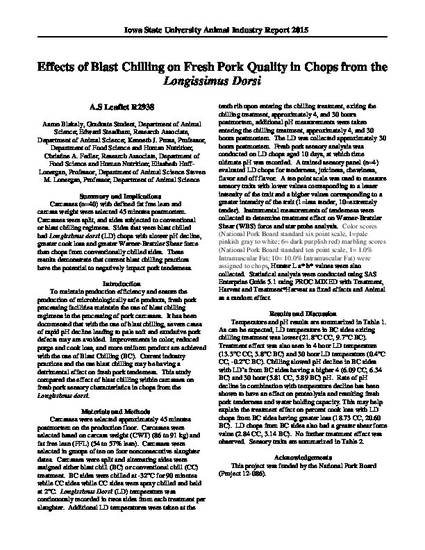
Unpublished Paper
Effects of Blast Chilling on Fresh Pork Quality in Chops from the Longissimus Dorsi
Animal Industry Report
Extension Number
ASL R2938
Publication Date
2015
Disciplines
Topic
Animal Products
Summary and Implications
Carcasses (n=40) with defined fat free lean and carcass weight were selected 45 minutes postmortem. Carcasses were split, and sides subjected to conventional or blast chilling regimens. Sides that were blast chilled had Longissimus dorsi (LD) chops with slower pH decline, greater cook loss and greater Warner-Bratzler Shear force than chops from conventionally chilled sides. These results demonstrate that current blast chilling practices have the potential to negatively impact pork tenderness.
Copyright Holder
Iowa State University
Copyright Date
2015
DOI
https://doi.org/10.31274/ans_air-180814-1260
Language
en
Citation Information
Aaron M. Blakely, Edward M. Steadham, Kenneth J. Prusa, Christine A. Fedler, et al.. "Effects of Blast Chilling on Fresh Pork Quality in Chops from the Longissimus Dorsi" (2015) Available at: http://works.bepress.com/steven_lonergan/86/
